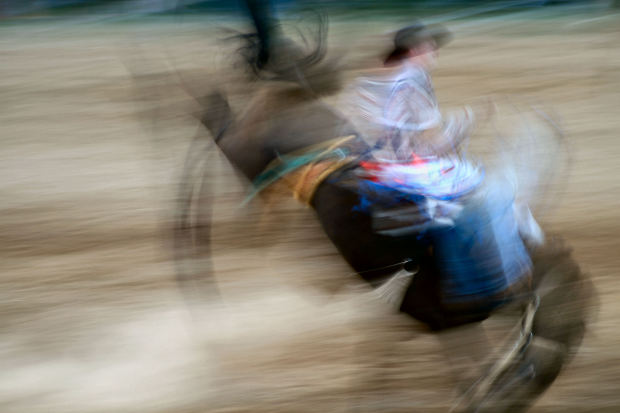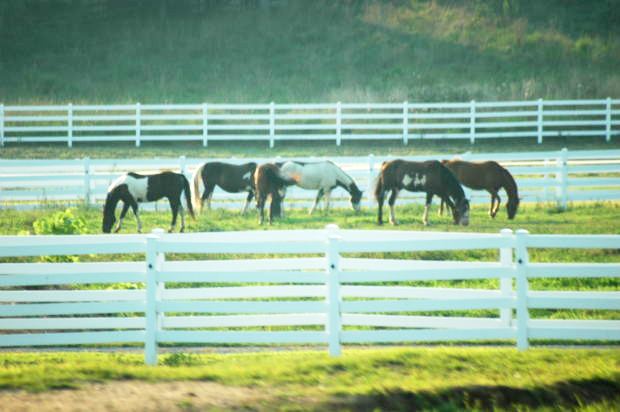 Not every horse story is a happy one. I talked to someone yesterday who told me about a filly that was causing trouble, fighting with other horses, and when tied up would pull back hard and break halters every time. So they tied her with a log chain around her neck, trying to break her of pulling back….and so she broke her neck. That story left me stunned, with a sick feeling in the pit of my stomach that I can’t get away from. I saw this filly not long ago, a beautiful bay roan with a big white star on her face. And just like that, she’s gone.
Not every horse story is a happy one. I talked to someone yesterday who told me about a filly that was causing trouble, fighting with other horses, and when tied up would pull back hard and break halters every time. So they tied her with a log chain around her neck, trying to break her of pulling back….and so she broke her neck. That story left me stunned, with a sick feeling in the pit of my stomach that I can’t get away from. I saw this filly not long ago, a beautiful bay roan with a big white star on her face. And just like that, she’s gone.
It’s not the first time a horse has been injured out of stupidity, and it won’t be the last. But I’m writing this in the hopes of reaching out and educating some people about handling horses. A horse cannot be forced to do anything. When you force it, something’s going to break, and it’s either going to be you or the horse.
In the old days, that was the cowboy way. They would tie a horse down, bite his ear while someone threw a saddle on him, a rider jumped on and spurred him to pieces until he quit jumping and just stood there quivering. Today with the current trend of natural horsemanship, those hard ways of training have pretty much gone by the wayside. But still too often a lack of understanding, or lack of patience, gets in the way and it makes good people do dumb things.
What is the basic difference between the old rough cowboy way and the newer natural horsemanship techniques? Natural horsemanship appeals to a horse’s natural instincts and uses safe methods that help guide the horse into choosing the correct behavior on its own, rather than forcing it to submit. It’s a combination of understanding the horse’s way of thinking, viewing issues from the mind of the horse, and finding a way to introduce your wishes to the horse in a way that he will willingly accept your requests and obey your commands. It requires a person to communicate to the horse with a language he understands, using body language, position, consistent repetition of cues, and a series of applying pressure and releasing pressure until the horse understands what is being asked of him and responds.
Regardless of the widespread use of natural horsemanship nowadays, some people are still not getting it. It’s like that silly saying, “If it won’t fit, don’t force it, just get a bigger hammer.” Years ago, I had a farrier come out to trim my horses’ hooves when I was pregnant and not feeling like trimming them myself…he did okay until introduced to my mare Daisy, who took an instant dislike to him. He just said, “Well, she won’t pick up her hoof, I’ve got a tool for that.” And went and got a claw hammer from his truck and gouged the back of her pastern with the claw hammer. He did not get her hooves trimmed that day, and I will never have him on the place again. As stated above, you can not force a horse to do anything. Find a better alternative! (I have, by way of trimming them myself, and having Cowboy Dad hold a grain bucket in front of Daisy so she doesn’t care what I do with her feet, she’ll do anything as long as she’s able to eat grain!)
If you’re one who relies on tying up a horse’s feet to trim its hooves, you’re headed for trouble. You need to work with that horse until it will pick its hooves up. If you’ve got to resort to force, someone is going to get hurt, and you’d be better off sedating the horse than tying its legs up and creating trauma. A horse doesn’t forget trauma. Avoid getting yourself in situations where bad things can happen. Work in a round pen with the horse on a long lead rope, desensitizing its fear of you handling its feet, until you can get it to do anything you want. That’s the best and safest way, and while it might be more work, it will last a lifetime.
I can think of at least four horses right now that were beautiful creatures until someone forced them to do something they weren’t ready to accept….and they’re dead now.
So if you’re having trouble with a horse, whether it’s a halter-breaking thing, or a trailer loading thing, or a buddy sour thing….whatever it may be, find a calm and non-forceful way to deal with it, or else hire a natural horsemanship trainer to do the work for you. If you watch some of the videos that are out there for training horses, you’ll see a lot of groundwork as simple as lunging for helping horses that have issues. It might not seem to be related, but having a horse that handles well from the ground always translates over to riding, trailer loading, and whatever else you’re trying to get it to do.
The horsemanship gurus on TV have made a good start in educating the general horse enthusiast, but too many times there are novice horse owners who don’t fully understand what the trainer is doing, and cannot get the technique to translate over into their world of problems with their own horse. That’s the kind of person who needs to hire a trainer to work with them, so that they can ask questions, request further information, and see it benefit their own horse while they learn themselves.
Whatever you do, don’t try to force a horse to do anything. Find a better way.

